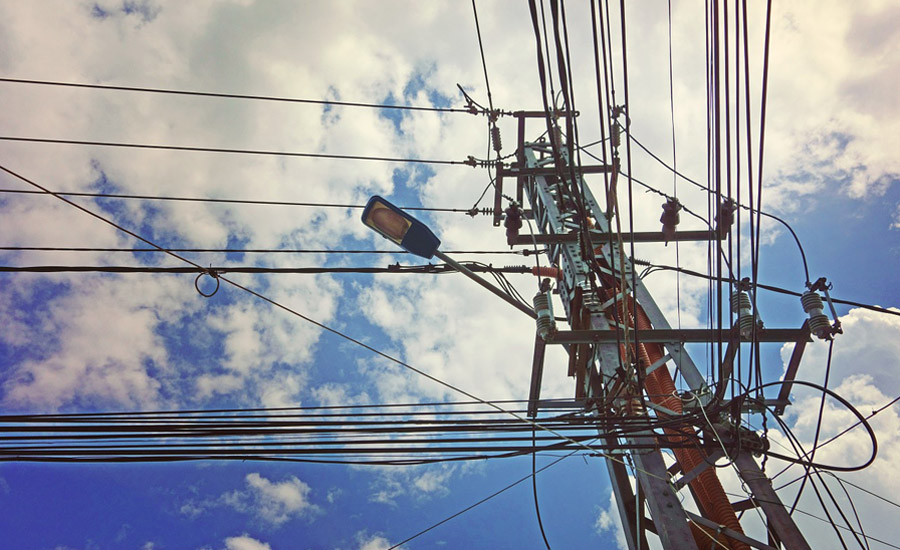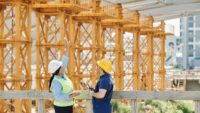How to improve construction efficiency with temporary power sources

Credit: Getty Images
Maintaining a high level of construction efficiency makes it easier for contractors to stay on schedule and under budget. It’s simple to envision how a power outage could halt work and cause other complications, such as increasing workers’ risk of injury.
Fortunately, temporary power sources — such as those provided by portable generators or connecting to a utility company’s source — can keep a workflow progressing even if the main electricity sources fail. Here’s how to make the most of it during construction projects.
Create a thorough plan to account for possible scenarios and likely needs
The first step of using backup power effectively involves understanding how it will need to be used and ways the generator could assist during outages. Thinking about the necessities in advance prevents unpleasant surprises that could delay work and add expenses.
When moving through the planning process, company leaders should not assume they only need backup power if construction crews work on something directly related to electricity provisions. In one instance affecting the Paris Las Vegas hotel and casino, contractors working on the subfloor accidentally cut the primary and backup power lines. Guests complained, and some said the event made their trip the worst they’d ever had.
Getting ready to bring temporary power to a construction site requires creating a detailed plan accounting for the types of equipment requiring electricity, the project’s size and any specific client needs. Details about how often portable generators will be used instead of a utility company’s supply should be included.
That information goes into a layout that details the position of equipment, plus any associated loads. If a client or their electrical contractor does not know the precise loads for some equipment used, the team creating the layout should give the best estimate based on experience from similar jobs.
A temporary power layout should also account for what could happen if things go wrong. A case where a construction worker hit a cable caused a brief lights-out moment at a medical center. Backup generators started promptly. Without the forethought shown by planning teams, that small period of uncertainty could have become a prolonged catastrophe.
Maintain temporary power sources correctly
Implementing temporary power at a construction site may mean only relying on generators for backup power if something goes wrong — such as in the medical center example above. A more common reason to rely on backup energy during construction is to use temporary electricity before the main systems are fully operational.
Whether temporary power sources will run eight hours per day or that same amount during a year, they need periodic maintenance for safe, reliable operation. The steps to take range from daily checks of the levels associated with oil, coolant and fuel to annual servicing of the generator’s whole cooling system.
Maintenance is especially crucial if the goal is to boost efficiency with temporary power. Inadequate upkeep may make an energy source fail or run roughly and cut off frequently. Those issues lead to wasted time that could interfere with a project’s timing.
If construction firms own temporary power equipment, representatives from those organizations should carry out the necessary maintenance at the right intervals. Used generators, for example, can be secured at lower rates with shorter lead times — often with a detailed maintenance history if the seller has a good reputation.
Alternatively, before someone rents power equipment for a construction site’s short-term needs, they should verify that upkeep occurred, such as by requesting a recent certificate.
Teach team members to work around temporary power safely
Accidents can prevent efficiency aims from coming to pass. Temporary power sources provide electricity to avoid work stoppages. However, people must not become so fixated on sticking to an ideal schedule that they disregard how to stay safe while working with generators.
For example, generators have combustion engines that typically run hot. That means a person must turn it off and let it cool before adding more fuel. Otherwise, the gas vapors could mix with the generator’s heat and cause a fire or explosion.
Generators produce carbon monoxide gas. Since it does not have an odor or color, people often don’t realize the effects of poisoning until it’s too late. Besides properly venting generators, workers should never use them indoors.
When setting up temporary power, people must also use cables rated for the right environment. Some make the dangerous mistake of choosing less-expensive indoor lines for harsh outdoor settings. However, such equipment does not have the weather and corrosion resistance for safe use outside.
Clear signage helps warn workers about temporary wires and power equipment. Site managers should only allow authorized personnel to interact with generators or wiring. Keeping doors and covers locked sends a visible sign that people should not handle the equipment without permission.
Build equipment removal specifics into usage plans
Some construction site managers overlook specifics for the removal of temporary power equipment. If communicating with a specialty provider, they should ask how far in advance when to schedule removal and whether they can alter that appointment within a certain notice period.
Getting those details in advance helps with planning the final stages of a project. For example, if it took several weeks to schedule an appointment, the removal timeline should not be cut too close. Extra time steers clear of difficulties that arise if the timeline runs long and prolongs needing the equipment.
On the other hand, a company representative might allow an appointment to be canceled up to 24 hours before it happens and reschedule quickly. Then, timing is not such a crucial issue.
Careful Planning Leads to Optimal Results
Temporary power can help construction work continue smoothly when power outages or a lack of electrical infrastructure at a site might otherwise stop or slow down productivity. However, thoughtful planning must happen at every stage. Thinking ahead saves time and avoids costly problems.
Looking for a reprint of this article?
From high-res PDFs to custom plaques, order your copy today!







